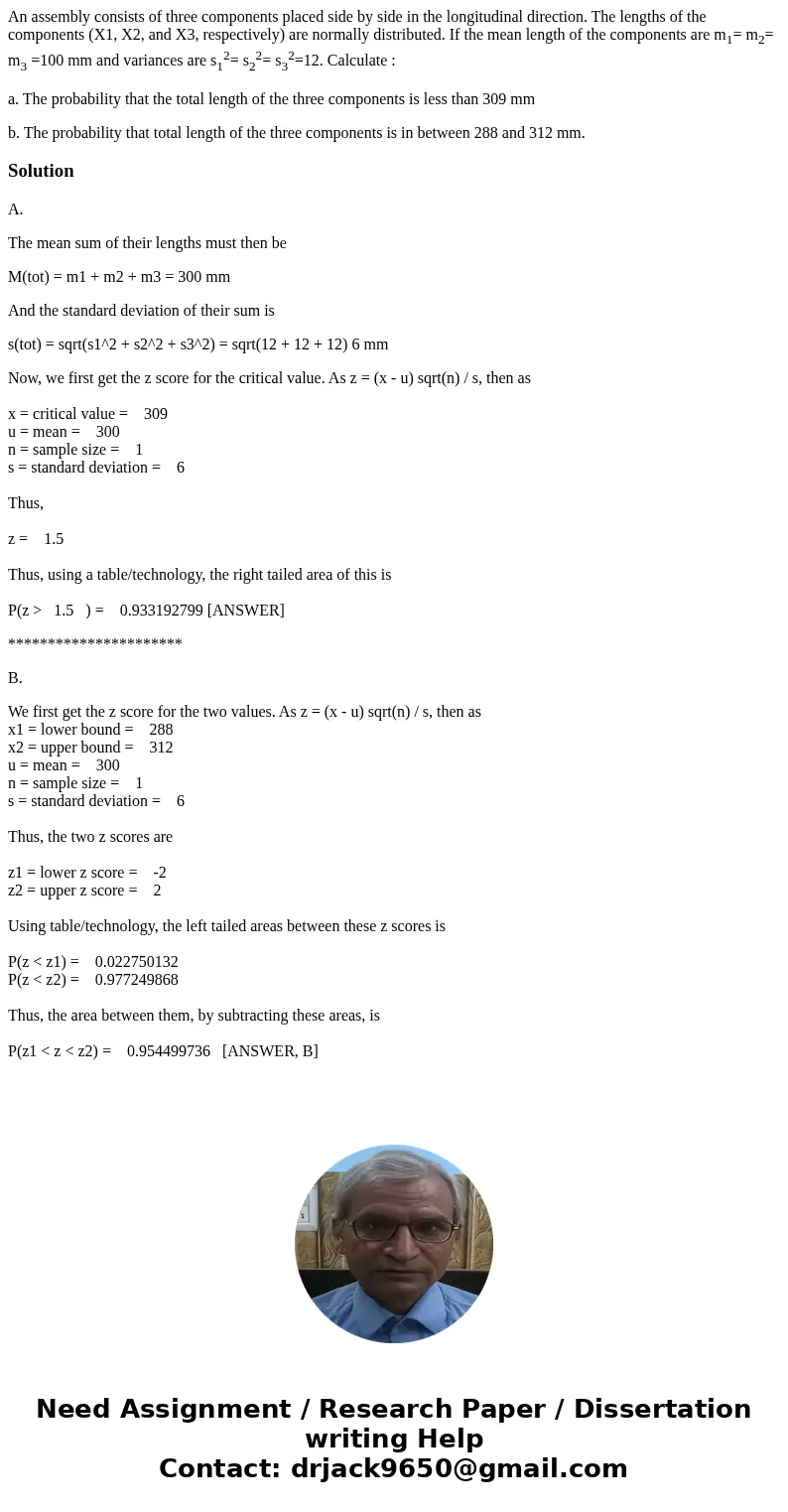An assembly consists of three components placed side by side
An assembly consists of three components placed side by side in the longitudinal direction. The lengths of the components (X1, X2, and X3, respectively) are normally distributed. If the mean length of the components are m1= m2= m3 =100 mm and variances are s12= s22= s32=12. Calculate :
a. The probability that the total length of the three components is less than 309 mm
b. The probability that total length of the three components is in between 288 and 312 mm.
Solution
A.
The mean sum of their lengths must then be
M(tot) = m1 + m2 + m3 = 300 mm
And the standard deviation of their sum is
s(tot) = sqrt(s1^2 + s2^2 + s3^2) = sqrt(12 + 12 + 12) 6 mm
Now, we first get the z score for the critical value. As z = (x - u) sqrt(n) / s, then as
x = critical value = 309
u = mean = 300
n = sample size = 1
s = standard deviation = 6
Thus,
z = 1.5
Thus, using a table/technology, the right tailed area of this is
P(z > 1.5 ) = 0.933192799 [ANSWER]
**********************
B.
We first get the z score for the two values. As z = (x - u) sqrt(n) / s, then as
x1 = lower bound = 288
x2 = upper bound = 312
u = mean = 300
n = sample size = 1
s = standard deviation = 6
Thus, the two z scores are
z1 = lower z score = -2
z2 = upper z score = 2
Using table/technology, the left tailed areas between these z scores is
P(z < z1) = 0.022750132
P(z < z2) = 0.977249868
Thus, the area between them, by subtracting these areas, is
P(z1 < z < z2) = 0.954499736 [ANSWER, B]

 Homework Sourse
Homework Sourse